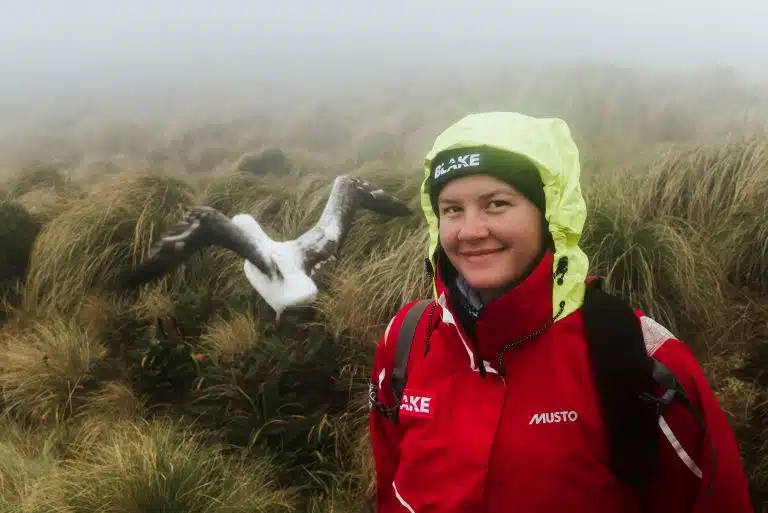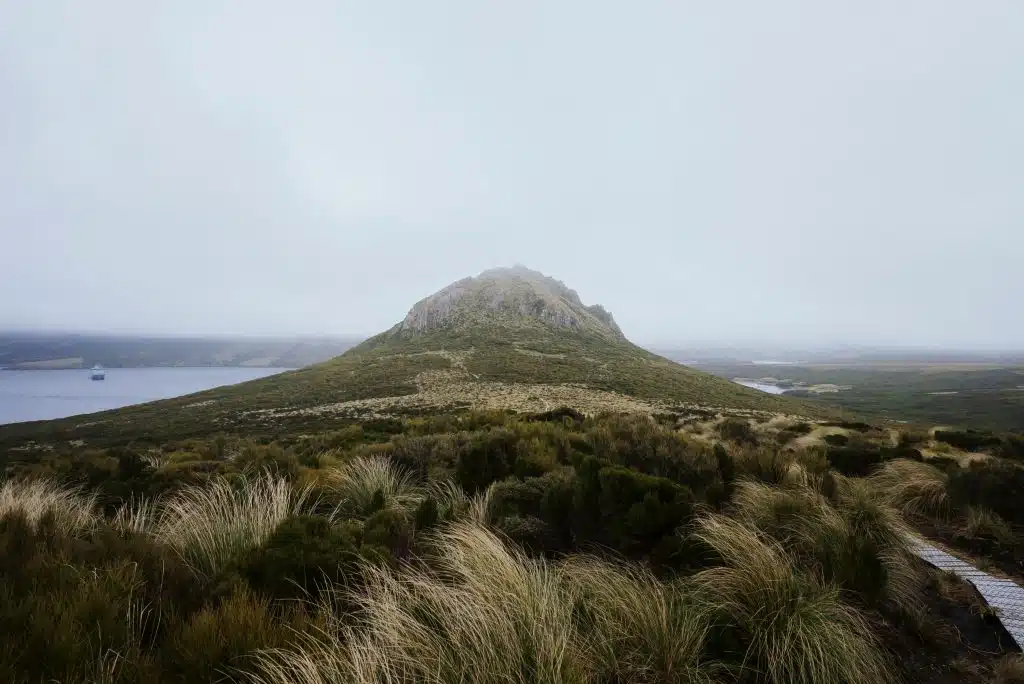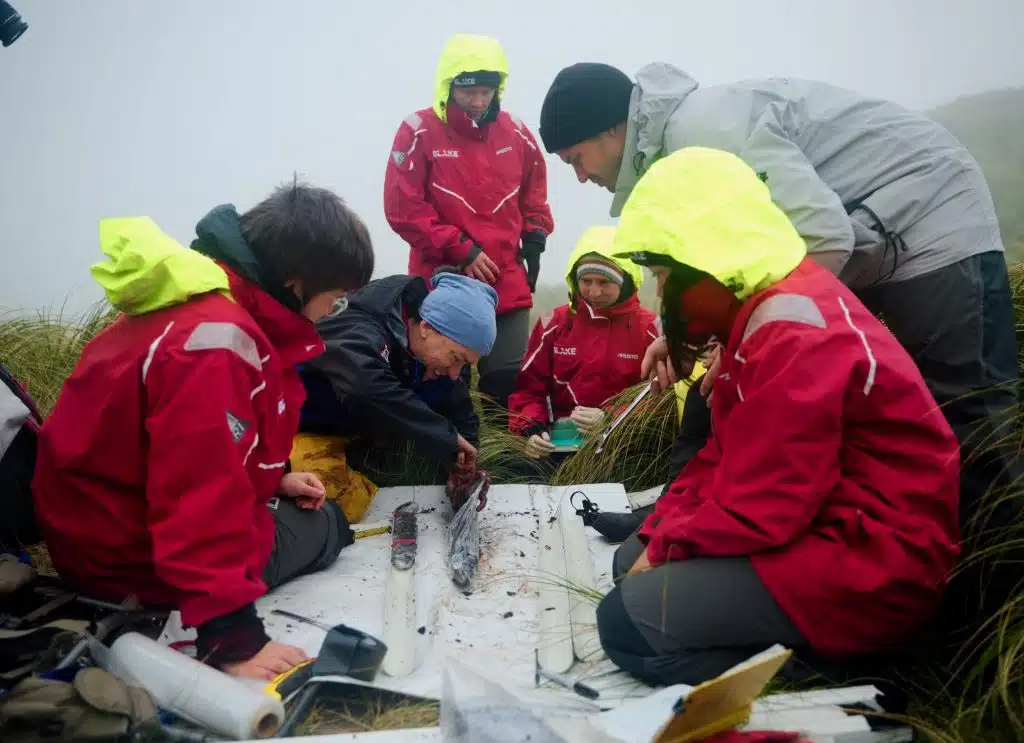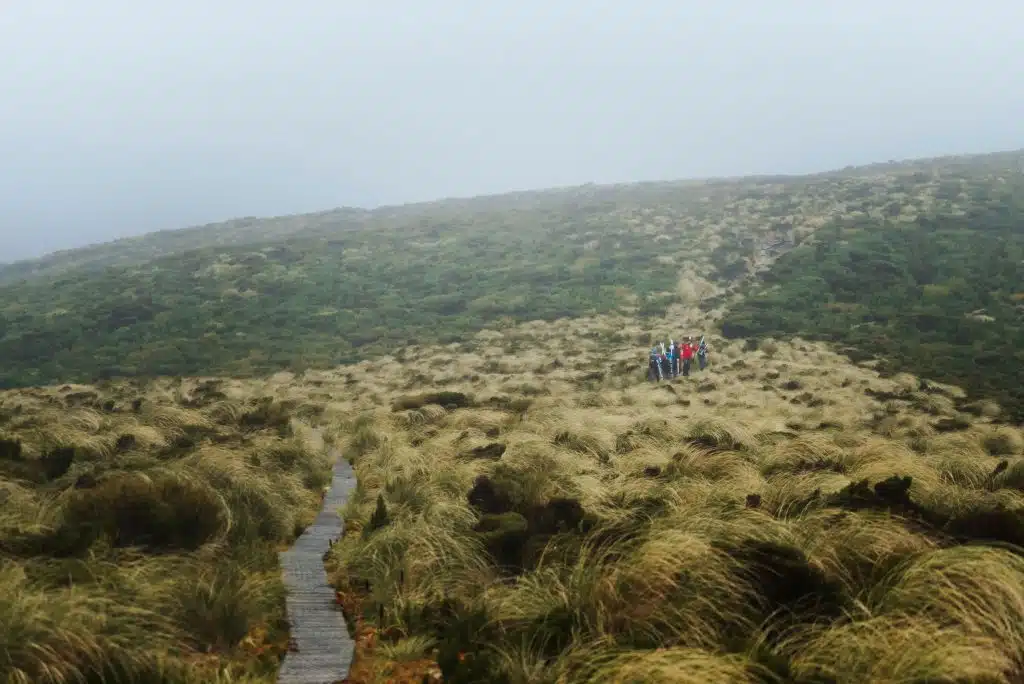Motu Ihupuku, Campbell Island, remote and rugged, this uninhabited Sub Antarctic Island lies 700 km south of Te Waipounamu – New Zealand’s South Island.
Campbell Island is home to a diverse abundance of unique wildlife, including six species of albatross, endemic freshwater invertebrates, and distinct flora such as the megaherbs – a group of herbaceous perennial wildflowers.
Annually less than 1500 people get to experience this pristine, picturesque location; I had the privilege and responsibility of being one, along with a select team of other environmental leaders from throughout Aotearoa. Our team comprised of students, teachers, and scientists from GNS Science, University of Otago, and Cawthron Institute as part of BLAKE’s sixth BLAKE Expeditions programme of scientific voyage and discovery. This was in conjunction with Operation Endurance – the joint Royal New Zealand Navy and Department of Conservation expedition to New Zealand’s Sub Antarctic islands, undertaken by the HMNZS Canterbury multi-role vessel Navy ship.
My involvement in this expedition saw me assisting climate researcher, and GNS scientist Greer Gilmer with coring and collecting peat samples from Col Lyall saddle on Campbell Island. Peat being soil from the earth formed by the partial decomposition of organic matter derived primarily from plant materials. According to Greer, Campbell Island peat has been deposited there since the end of the region’s last Glacial Period, meaning the deepest peat may be 16,000 – 18,000 years old. The peat samples we collected will be used to reconstruct past climate conditions in the Southern Hemisphere helping us gain insight into past wind and rainfall patterns, depicting how the climate has changed over the past 18,000 years. Information obtained from this study will assist in understanding how organisms previously responded to historic climate conditions and changes, and what may happen in future years as the climate continues to warm.
To identify how old the peat is, it will undergo radiocarbon dating – an age determining method that uses the decay of a radioactive isotope of carbon (14C) to measure time and date objects containing carbon-bearing material. The peat is also scanned with an iTrax XRF Core Scanner to obtain high resolution geochemical and image data which will measure the type and ratios of the multiple elements present in the Peat.
Additionally, eDNA testing will be carried out on the peat by molecular biologist Ulla von Ammon. Environmental DNA, or eDNA, refers to all the microscopic traces of genetic material that is deposited in a water or soil environment when a living organism passes through it. Small samples of the peat collected from Campbell Island will be taken back to the lab and run through tests which will detect traces of species that were present in the sampled area, within a timeframe dependent on the age of the peat. We expect to find traces of the many unique species that currently inhabit Campbell Island such as the southern royal albatross. It may also detect traces of introduced species that formerly inhabited Campbell Island, like sheep, which were once farmed on the island during the early 1890s, post the time when the island was used as a base for sealers and whalers. The island proved poor for cultivating livestock due to extreme climate and weather conditions, thus the farm was abandoned in the early 1930s.
After completing our peat sample collection, before leaving the island, myself and the BLAKE crew had the most amazing encounter with a large southern royal albatross! This great, fully-fledged friend emerged from above, curiously creeping closer towards the group before showing off its impressive wing-span, holding a distance of less than a meter from us! This was a surreal moment and was definitely one not many people get to experience in their lifetimes. I am truly amazed and beyond grateful!
For me, participating in the ‘BLAKE Expeditions’, expedition to the Sub Antarctic Islands and living at sea aboard HMNZS Canterbury was such an eye-opening experience, as it really put into perspective the importance of conservation; protecting our natural environmental taonga, the many procedures we can take to ensure this or figure out the best ways to do so, and what we could achieve if we all take on the roles of Kaitiaki.
From a Te Ao Māori perspective, as people, we identify ourselves based on our connections to the whenua; hence our strong spiritual ties to the environment and values of kaitiakitanga. In relation to this perspective, I believe our overall health as people, in regards to the dimensions that contribute; taha wairua (spiritual), taha hinengaro (mental), taha tinana (physical), and taha whanau (social), is directly dependent on the health of our environment. Through participating in conservation projects and living sustainably we are fulfilling an environmental aspect of giving back to the land. If we all work collectively to do this, we can enhance our social wellbeing – whether this be through sharing ideas or helping communities preserve natural spaces; trails, parks, beaches, places where people can connect. In a healthy environment we are enabled to connect to the cycles of nature; we are provided with a harmonious space to relax, unwind, reflect and restore ourselves – for many whanau this could be through activity, sustainably catching kai; hunting, fishing, or shellfish collecting, and in doing so we are fulfilling the needs not only for good physical health but also good spiritual health. Improving one cornerstone of health helps build up others; good spirituality will strengthen us emotionally by helping alleviate the effects of mental pressures and with good mental health the cycle of self-improvement through the dimensions of hauora continues, providing an opportunity for us to mould ourselves into better people – our environment being the dictator of this.
To be a better me is my motivation to conserve our natural world. It is for this reason that I encourage you to care, to take action, and to sustain a healthy environment, for ourselves and succeeding generations! Thank you BLAKE for helping me realise this passion and giving me the tools and motivation to share it with others.
Mauri ora!





